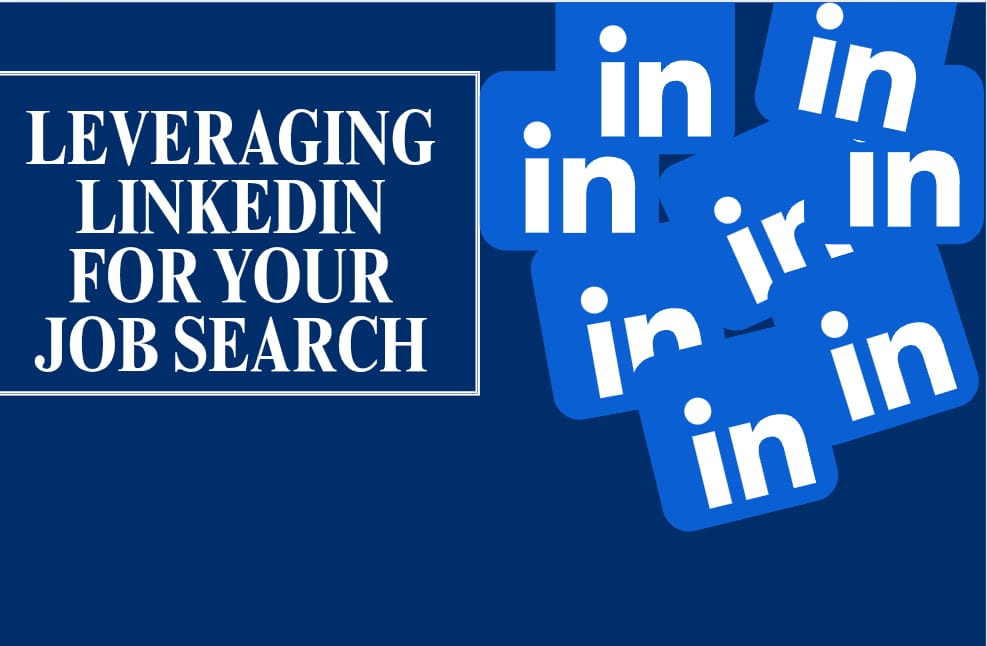Why is LinkedIn Crucial for Job Seekers?
In today’s time, sending a resume is not enough; you must also create a strong online presence. LinkedIn is one of those platforms where you can build your professional brand. Recruiter checks your LinkedIn profile because here they know about your skills and achievements in one place only. On LinkedIn, you cannot only apply for a job, but you can also connect with recruiters, talk to them, and follow your dream company. The recruiters are active on LinkedIn every second, that’s why if you are searching for a job, then LinkedIn can be a game-changer for you.
Importance of LinkedIn in the Modern Job Market
In today’s era, the job market has become fast and competitive. Traditional job search methods like sending a resume on job portals are not enough. Now LinkedIn has become a powerful tool. It can make you special than others. LinkedIn is not only a network site it is your digital resume + portfolio + networking platform.
Digital Resume
LinkedIn profile works like a digital resume. It is your updated, visible, and searchable resume.
Recruiter’s favourite tool
Now, most of the recruiters first check your LinkedIn profile, then go for your resume.
Direct connection
With the help of LinkedIn, you can directly connect with HR, company leaders, and hiring managers.
Professional branding
LinkedIn is one of those platforms where you can build your professional brand. Recruiter checks your LinkedIn profile because here they know about your skills and achievements in one place only.
Provide Alerts and filters
LinkedIn suggests suitable jobs for you and also sends job alerts.
Industry knowledge and networking.
You can follow professional, you can learn from their content, and you can also create a meaningful network.
Increasing chances for referrals.
You can get referrals from your network, which can help you get a good job.
Optimizing Your LinkedIn Profile
Your LinkedIn profile is your digital first impression — it’s often the first place recruiters and potential employers check before contacting you. To make it effective, start with a professional profile picture and a clear, keyword-rich headline that reflects your role or target position (e.g., “Aspiring Digital Marketer | Content Creator | SEO Enthusiast”).
Let’s see in detail;
1. Professional Profile Picture
Your profile photo is the first thing people notice. Make sure it’s:
- High quality (clear, not pixelated)
- Professionally dressed.
- Friendly and approachable expression.
- Clean background.
Tip: Avoid selfies or party photos — go for a simple headshot with good lighting.
2. Catchy & Clear Headline
Your headline doesn’t have to be just your job title. Use it to show your value, skills, and target role.
Examples:
“Unemployed | Looking for work”
“Content Writer | SEO Specialist | Helping Brands Grow with Engaging Content”
A good headline grabs attention and helps you appear in searches.
3. Strong About Section (Summary)
This is where you tell your professional story. Use simple language to cover:
- Who you are?
- Your top skills and experience.
- Your goals or what you’re looking for?
- A call to action (e.g., “Open to new opportunities” or “Let’s connect!”)
- Use short paragraphs or bullet points to make it easy to read.
4. Experience & Roles
Don’t just list job titles — explain what you actually did. For each role:
- Mention your key responsibilities
- Highlight accomplishments
- Add numbers or results when possible.
- “Increased blog traffic by 60% in 6 months through SEO strategy and content updates.”
This helps recruiters understand your impact.
5. Skills & Endorsements
Add relevant skills to your profile — LinkedIn allows up to 50, but focus on your top 10–15. Ask colleagues or past clients to endorse your top skills to build credibility.
Pro Tip: Match your skills to the jobs you’re targeting.
6. Recommendations
Recommendations are like reviews for your work. Politely request a few from:
- Former managers
- Teammates
- Clients or mentors
Sample Message:
“Hi [Name], I really enjoyed working with you on [Project/Team]. If you’re comfortable, would you be open to writing a short recommendation for me here on LinkedIn?”
7. Featured Section of LinkedIn
This section lets you showcase your best work. You can add:
- Articles or blog posts
- Your resume
- Portfolio links
- Certificates
- Key LinkedIn posts
It’s a great space to make your work visual and clickable.
8. Certifications & Courses
Have you taken online courses or earned certificates (from Coursera, Udemy, Google, etc.)? Add them to show you’re actively learning and staying updated in your field.
Example:
“Google Digital Marketing Certification – Completed June 2025”
Custom LinkedIn URL
By default, your LinkedIn profile URL has random numbers and letters. Make it short and professional by customizing it.
How to:
Go to your profile → Click “Edit Public Profile & URL” → Customize your URL
Example: linkedin.com/in/priyakumari
This is easier to add to resumes, business cards, or email signatures.
Building a Strong Network
Creating a strong network on LinkedIn is a valuable step in today’s world. But only connecting with people will not help to get a better job, you have to make sure that you are connecting with the right people. Whenever you send a request to anyone, write a short personalized message for sure. After connecting, start commenting on posts, sharing valuable content, and engaging regularly to be visible. Join a LinkedIn group, follow industry leaders, and be part of relevant discussions. The most important thing is to always give valuable thought. Slowly, you will see that your efforts are building a strong and trustworthy connection, which can open doors to job opportunities and long-term growth for you.
How to Build Genuine Connections on LinkedIn?
Networking could be overwhelming for a job seeker, but if you follow a step-by-step approach, then it will become easy and effective. First, you need to set your career goal, like – in which industry do you want a job, which role do you prefer, and which company is your priority. Then, accordingly, you have to use your network, like a school or college benchmate, a colleague, a teacher, or family friends.
The next step is to update your profile on a professional platform like LinkedIn. Then start connecting with people and start commenting on industry-related posts. You can also share someone’s valuable post on your profile to show your visibility. When you connect with someone, send a short and polite message to introduce yourself and your purpose to connect with them. The most important part of networking is follow-up. Maintaining connection is important, that’s why check regularly, engage with their updates, and express gratitude. Slowly you’ll see progress in your network.
Benefits of LinkedIn Premium for Job Seekers
LinkedIn offers both a free and a premium version. There are many benefits to the premium version, and for job seekers, it can be a great choice — many experts and professionals have already opted for it. However, before purchasing the premium plan, you should try the free version first. If you find it comfortable and believe it can bring value to your future, then you can decide whether to go for the premium or not.
LinkedIn Learning Access
Premium gives you full access to LinkedIn Learning, where you can take professional courses and earn certificates.
Why it matters: You can upskill while you search for jobs, making yourself a stronger candidate.
Access to Job Insights
LinkedIn Premium shows you competitive insights when applying for jobs, such as:
- How many people have applied
- Where do you rank among other applicants
- Which skills are most common among top candidates
See Who Viewed Your Profile
With Premium, you can view the full list of people who have visited your profile in the last 90 days.
Why it matters: This helps you understand who is interested in you — recruiters, hiring managers, or industry peers — and you can reach out to them strategically.
Featured Applicant Status
When you apply for a job through LinkedIn using Premium, you appear as a Featured Applicant.
Why it matters: This boosts your visibility and makes your application more likely to be seen by recruiters.
Send InMails Without Connecting
Premium users get InMail credits to message people outside their network (like recruiters or decision-makers), even if you’re not connected.
Why it matters: You can directly pitch yourself for roles or introduce yourself to hiring managers — this can lead to hidden job opportunities.
How to Use LinkedIn Job Search Tools Effectively?
If you use LinkedIn effectively, it will become a powerful job search tool for you. Below are the tips to use tools effectively;
Set filters in the Job section.
Set level, and work type to get relevant jobs.
Enable Job Alerts.
Enable alerts so that you get a notification whenever a new job is posted related to your field.
Use the ‘Easy Apply’ Feature.
Apply using your LinkedIn profile without filling out long forms. It’s faster and more convenient.
Follow Company Pages.
Follow your dream company on LinkedIn to get latest job openings, and news.
Make Use of Premium Insights (if available).
You can see how many candidates have applied for the job, and what your ranking is among them.
Check the “Skills Match” Section.
Below description you can see is skill matching with relevant skills or not. If skill is missing then you can update it.
Message Recruiters Directly.
After applying, if a recruiter is listed, send a short, professional message to express your interest in the role.
Keep your Profile Updated and Job-Ready.
Make sure your profile has a strong headline, a compelling About section, updated experience, and relevant keywords to show up in searches.
Avoid Mistakes While Using LinkedIn
LinkedIn can be a powerful tool for your career growth — but only if used wisely. Many job seekers unknowingly make mistakes that hurt their visibility and professionalism.
Here are some common mistakes that you should avoid while using LinkedIn to use effectively.
Using an unprofessional profile picture
Avoid uploading blurry selfies, party pictures, or casual photos. Upload a well-dressed, neat and professional photo.
Outdated profile
If your profile is not updated then recruiters might reject your profile.
Generic headline like “Looking for opportunities”
Using headlines like “Looking for opportunities” looks weak, instead you should use like “Graphic Designer | Branding Specialist | Helping Businesses Grow Visually”.
Being inactive for weeks or months
If you are inactive for weeks then it decreases your visibility. Engage 2-3 times in a week.
Sending connection requests without a message
Sending personalized messages at the time of sending connection requests. It shows professionalism and increases the chances of acceptance.
Not engaging with your network
If you are not engaging with the connected person then there’s no point of connection. Engage to see long term relationships.
Spamming recruiters or groups
Follow up only 1-2 times, not more than that otherwise it will have a negative impact on the recruiter.
Conclusion
This was all about Leveraging LinkedIn.
We all know how much struggle and hard work it takes to build a successful career. But today, technology has made everything so much easier. We don’t need to sit and think for hours to create a resume, we don’t have to ask others for help, or write every single detail manually.
We don’t need to rely on newspapers or visit companies in person to search for jobs — Linkedin has made everything so simple and accessible.
And when we have such powerful tool to support us in these challenging times, we should definitely make use of them — and not just use them, but use them correctly, so we can truly benefit from them, save our time, and move forward more effectively.
This tool is nothing less than a source of motivation in today’s career journey.
If you’re actively job hunting, don’t miss our guide on Networking Strategies for Job Seekers. It explores how to build genuine connections, ask for referrals the right way, and use tools like LinkedIn, Hunter.io, and Calendly to uncover hidden job opportunities. Combine those strategies with the tips shared here to make LinkedIn your most powerful networking tool.







Comments
Leave a Comment